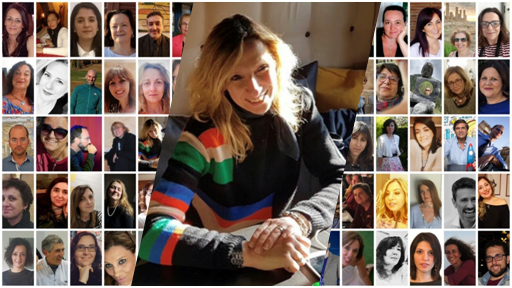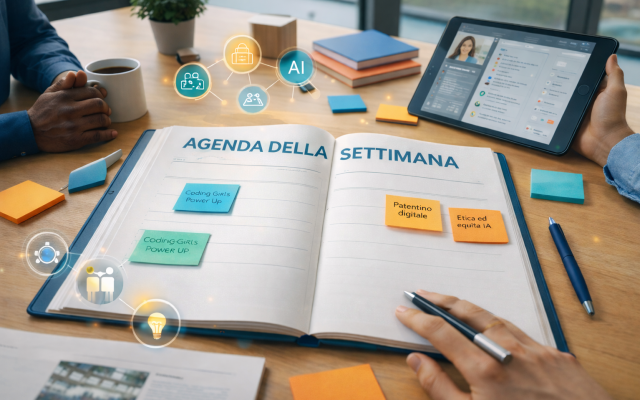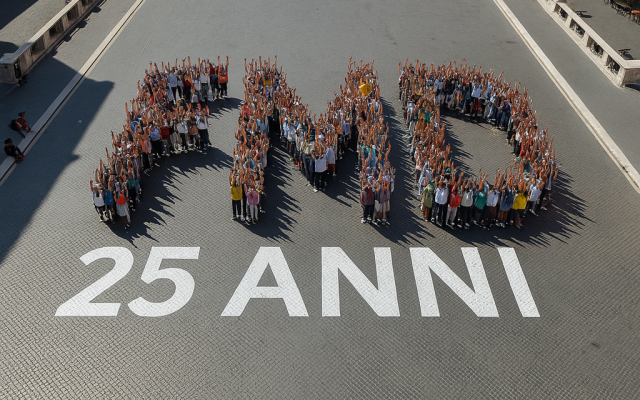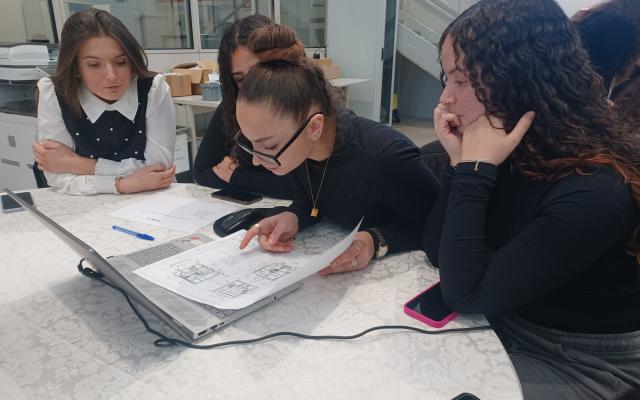Or weekly “Our School” Professors instalment takes us to Campania, today, to meet journalist-professor Annamaria Bove, who teaches at the Istituto Enrico Fermi in Sarno, in the Province of Salerno.
Annamaria Bove has a degree in Italian Literature and is a journalist. In 1990, after receiving her degree, she began working as a journalist with a local TV station and collaborating with various newspapers, including Il Roma and Il Giornale di Napoli. In 1995, she left the world of journalism to start teaching, but she brought her passion for journalism with her. As a teacher trainer (Indire and then Pnsd), she hosts courses on information, media education and the use of digital tools in didactic activities.

This year, as an “Our School” Professor, Annamaria Bove worked on open data. Together with colleagues from various schools and regions, she conceived and experimented a project to increase the awareness of students on the constructive use of open data, which can be collected, processed and provided to entire communities. The work group proposed an interesting course on service learning through a social use of data. The active participation of students and the local rooting of the course contribute to the development of a strong community. Thus, the “our” in “Our School” emerges thanks to a community of practices that collaborates by integrating technology with values, information with people.
As usual, we share a short presentation video and then an interview conducted by Ilaria Gaudiello, who coordinates the works of the open source community of teachers and educators.
INTERVIEW
Annamaria, we live in the era of information, and you have made information your job. How have journalism and the use of articles changed with digital tools?
Yes, it’s true. Information and communication are fundamental to me. It’s important to teach young people how to face information, which has – as you mentioned – changed with digital tools. Today, the length of an article is measured in “reading time” – time that youth often have no desire to “lose.” So, how do we convince young men and women to read, understand and analyse articles? How do we teach them to be critical about news items? Unfortunately, the web is increasingly full of content and the younger generations need to understand that complexity brings opportunity only if they know how to be selective and don’t end up caught in the vortex of the web.
So, how do you imagine journalism should be taught in the school of the future?
As I said before, I would always start with reading articles, not just articles in newspapers and on the web, but interesting articles in specialised magazines or reports in a weekly. Reading, reading anything we like or we are interested in. I always tell my students or journalists to read everything, even sports newspapers, just read! And after reading, pursue the comprehension of the article through brainstorming, analysis and new technology. Journalism, opinions, can give rise to debates. And this is how we amplify the opportunities provided by the practice of journalism at school. We have everything that is connected to writing, so we speak about types of texts, such as argumentative ones, and we also have the possibility of creating school newspapers or even video news reports to exercise a wide range of skills. A newspaper needs a school news desk, a work group that learns how to work as true journalists. This will allow them to fully understand what it means to hunt for news and that not all facts are news. Moreover, they learn what is necessary to publish news (photos, declarations, respect of privacy, respect of the rules of journalism, deontology, and much more). In short, journalism allows us to pursue media and information education, too.
This year, you joined the Fondazione Mondo Digitale “Our School,” collaborating with colleagues from around Italy to create an innovative course. What was the main added value of this experience?
Off the wall, I think of sharing, debate, interaction with colleagues as the added value. Conceiving, developing and testing an innovative course with colleagues was an added value. I believe firmly in sharing, especially when working with digital tools that require specific skills. In the various meetings organised by the FMD with colleagues working on different projects, I saw the emergence of the “Our” rather than individual protagonism, the work of the group that identified with the various schools.



